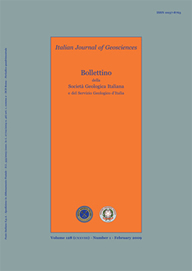
Generation of Trench-Arc-Back Arc Systems in The Western Mediterranean Region driven by plate convergence
Marcello Viti(*), Enzo Mantovani(*), Daniele Babbucci(*) & Caterina Tamburelli(*)
(*) Dipartimento di Scienze della Terra, Università degli Studi di Siena (Italy). Via Laterina, 8 - 53100 Siena, Italy - Tel. +390577233826(22), Fax. +390577233844. E-mail: Vitimar@unisi.it
Volume: 128 (2009) f.1
Pages: 89-106
Abstract
It is argued that the Neogene evolution of the Western Mediterranean region was mainly determined by the East to SE ward extrusion of wedges of the Alkapeca belt and by the westward extrusion of the Betic-Rif-Alboran wedge, both driven by the convergence between the Africa, Eurasia and Atlantic-Iberia plates. Back arc extension developed in the wake of Alkapeca wedges in the Liguro-Provençal and East Algerian basins and in the wake of Betics-Rif-Alboran wedge in the West Algerian and Alboran basins. The proposed interpretation, consistent with the minimum work principle, can plausibly and coherently account for the time-space distribution of the observed tectonic processes. It is advanced the hypothesis that the convergence of Africa, Eurasia and the Atlantic-Iberia plate determined the formation of two new microplates, Iberia and Morocco. If the proposed plate configuration is taken into account in the search of the Africa-Eurasia relative motion that best fits the available kinematic indicators in the Atlantic and Mediterranean regions, the resulting kinematics may be considerably different from the one currently adopted.
Keywords
Get Full Text